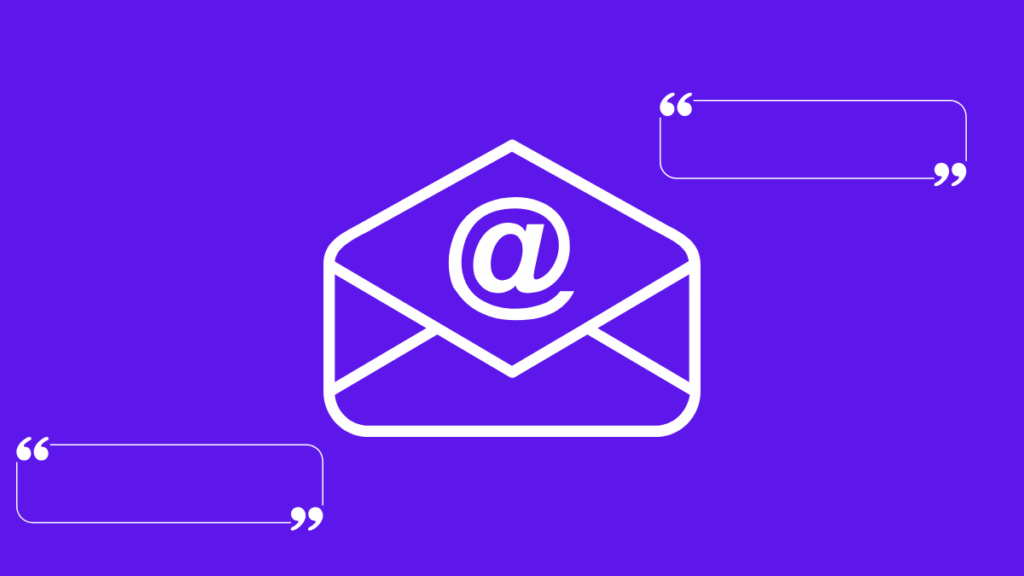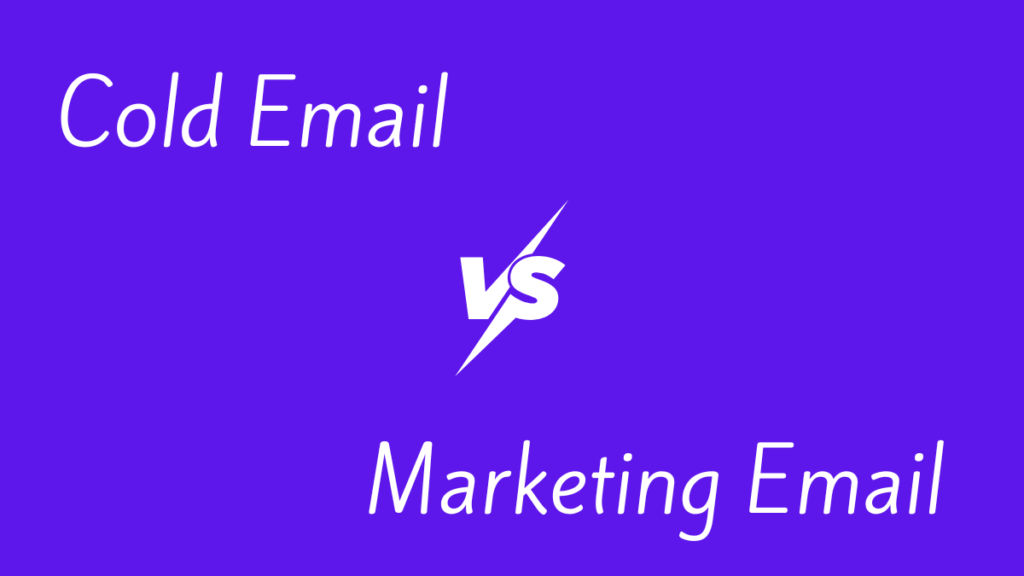You’ve done your technical set-up, cleaned up, verified your lead list, and ensured your copy is perfect. You hit send…and then nothing.
Sounds familiar? It’s the sad reality of most cold emailers. So, if you find yourself asking, “What is a good reply rate for cold emails?”, you’re at the right place. We’ll break down the best reply rate, how to improve yours, and what not to do. All verified by industry experts.
What Is a Good Cold Email Reply Rate in 2025?
No more asking, “What is a good email reply rate today?” Recent data considers a reply rate between 1%-5% healthy. However, that range can seem really small without the correct context.
A “good” rate depends on list quality, deliverability, industry, copy, and the tools you’re using to track replies, but this number can drop drastically if you’re ignoring infrastructure. If your results fall below the average cold email reply rate, you may want to reassess your offer, infrastructure, copy, or list.
Cold Email Reply Rate Benchmarks By Industry You Are Targeting (At Scale)
We know you’ve wondered what a good reply rate is for cold email. The answer varies dramatically depending on who you’re emailing. A good rule of thumb to follow is that reply rates increase when you’re reaching out to people who don’t get cold-pitched every day. That is also why emails to local businesses often outperform those sent to recently funded SaaS companies.
Automated Cold Email Reply Rates (2025)
- SAAS Companies: 2%
- Local Businesses: 5.5%
- E-Commerce: 1.5%
- Education: 3%
- Real Estate: 5%
- Hospitality: 3%
- Management Consulting: 1.5%
- Logistics and Supply Chain: 2%
- Healthcare: 2%
- Financial Sector: 3%
Most reply rates sit in the 1–5% range. That aligns with the average reply rate cold email 2025 benchmarks we’ve seen across industries.
When you manually email 100 hand-picked leads, you’re targeting your best-fit prospects. On the flip side, when you email 10,000 people, even if they’re all qualified, you’re inevitably casting a wider net, which is a good thing. You want to reach as many people as possible.
You might email 100 people manually and get 20 replies, or email 10,000 with Aerosend and get 150 replies.
If your cold email response rate is dropping, it may not be your copy; it may be your infrastructure. That’s why optimising your domains, lead lists, copy, and deliverability becomes even more important as you scale.
If the average reply rate cold email 2025 stats hold, we’ll continue to see a drop among unstructured campaigns.
Calculating Cold Email Reply Rate Properly
Most senders look at their cold email response rate and assume they’re doing just fine. The truth is that these could be false reply rates. How? Well, a lot of the “reply rates” that tools show you aren’t actually replies at all. Behind that number could be a mess of false positives.
Cold Email Reply Rate = (Real Replies / Total Emails Sent) x 100
Noticed how we mentioned “Total emails sent” and not “emails sent”? There is a catch here. Let’s say you email one person 10 times and get one reply. Then, is your cold email reply rate 10% or 100%? That depends on whether you’re calculating by total emails sent or by unique leads contacted.
- If you’re counting each of the 10 emails individually, it’s 1 reply ÷ 10 emails = 10%
- If you’re measuring replies per contact, it’s 1 reply ÷ 1 person = 100%
We believe your reply rate is 10% but most sequencers will show it to you as 100%.
Common Mistakes in Cold Email Reply Rate Tracking
- Counting bounces or auto-replies as responses
A reliable cold email reply rate guide will always:
- Count only real, human replies
- Ignore autoresponders, OOO replies, or bouncebacks
- Use total sent emails as the base
Factors That Negatively Impact Your Cold Email Reply Rate And How To Improve Them
Struggling with reply rates is every cold emailer’s worst nightmare. If you’re still wondering what is a good reply rate for cold email, here is how to improve your current ones.
Deliverability
The one is tough. Since there is no way of knowing where your email lands, you may want to give up. But don’t. There are ways you can ensure that your email lands right in the primary inbox. Make sure your domains are healthy, warm up consistently, monitor all relevant stats, and more. They all play a role in maintaining a healthy cold email reply rate. Want to get the highest deliverability possible? Aerosend’s got you. Our inboxes are designed for deliverability.
Your Offer
You need to have a no-brainer offer. It needs to be air-tight and compel the reader to respond. This is where industry comes into play again; some industries have a higher average than others. So, target and research industry pain points accordingly. It should be more about you solving something for them instead of you just trying to get another client/customer.
Lead List Quality
The quality of your email is irrelevant if your lead list is poorly sourced. We all say it’s quality over quantity, but here it is both. In other words, if your lead list isn’t verified, only built from a single source, has poor targeting, etc, then your reply rates will also reflect the same. A clean, segmented list with verified emails is foundational to hitting a good cold email reply rate.
You’ve got your lead list scraped from LinkedIn; maybe you sourced it yourself, but it’s now time to verify it. We recommend using a combination of Millionverifier, Apollo.io, and Clay for this.
You can use MillionVerify to verify initially → Run a Bounce ban → Waterfall the remaining ones → MillionVerify again → Bounceban new catchall leads → Get your final list
Personalization/Relevance
If your messages look like they’ve been tailor-made for the person who’s reading them, they’re more likely to reply. Now, this doesn’t mean that you have to sit and individually write all your emails. It simply means that you need to not mass-send one message. You can easily do this by segmenting your lead list by their role to get the pain point and craft your emails accordingly.
Subject Line
The first thing the recipient sees is the subject line. While it can have an impact, this doesn’t mean overcomplicating unnecessarily. A good subject line can be as long as just two words, but it still does the job it is supposed to. Keep it short, simple, and something that sparks curiosity (thoughts, John?, quick question, etc)
The KISS principle
This simply means Keeping It Short and Simple. Address the pain point, what you offer, how to move forward, and wrap it up. Just tell them here’s what the problem is and how you solve it. The first email you send in a campaign doesn’t even need to be 100 words. Your message just needs to be relevant and conversational to beat the average cold email reply rate.
Timing & Follow-Ups
Send when they have the highest probability of opening them. Study your lead’s day-to-day, when they are most likely to respond, and go from there. This varies depending on the industry.
Next are follow-ups. You don’t want to see too desperate and give your leads space. Send follow-ups at the right cadence, typically 2-3 business days apart, so that you can consistently improve your cold email reply rates.
A/B Test Your Emails
Be strategic, create two or more sets of emails when you send them, and then track which one performs the best. Note down your findings and conduct testing for better results. You can track what actually engages your audience through this. Testing variables can often push you beyond what is a good reply rate for cold email.
Crafting A cold Email That Gets Replies and Meetings
The sad reality of cold emailing is that most of them go unanswered; that is just how it is. So, what is a good reply rate for cold email in a world of noise? It’s not just about volume, it’s about structure. Anyone can write a cold email, but only a few can engineer an effective one. Below, you’ll find a cold email framework written by industry experts.
The 5-Line Framework by Aerosend to Get Replies To Your Cold Emails
Here is how the simple framework gets the replies:
Reason for Reaching Out (Optional)
This line makes or breaks your credibility. It’s optional, but when done right, it dramatically boosts your cold email reply rate. A lot of the time, you can combine it with the next point, which is the problem that you solve for them.
Mention something specific and recent:
- Did they post a job?
- Are they hiring SDRs without in-house recruiters?
- Did they recently raise funding?
Use AI to surface public signals (e.g., “Noticed you’re now SOC 2 compliant, congrats!”). What you don’t do is fake your reasoning. Make it relevant and short. Being real will get you the most cold email replies.
A Problem You Can Solve For Them
Now this is where most cold emails go wrong. They jump straight into features and benefits. Instead, start with the pain. Ideally, it should be something they’re already frustrated by but haven’t addressed.
You can use AI here too:
- Scrape job descriptions to identify internal bottlenecks
- Highlight inefficiencies based on org size or growth stage
Example:
“Founders I speak to often spend hours on hiring every week and it slows down product development.”
The clearer the pain, the better the reply rate.
Your No-Brainer Offer
At this point, the reader knows that you understand or maybe even relate to their problem. This is your in to give them a simple, undeniable offer. The key here is to tell them that you can solve their problem WITHOUT any added work.
Examples:
“We help startups hire pre-vetted SDRs without recruiters.”
“Get warm leads with 70%+ open rates — without burning your domain.”
This is your positioning line. It should be fast to understand and hard to ignore. Think of it as a one-liner pitch that’s designed for cold email response rate success.
How You Solve It + Social Proof
No one would want to trust you unless you show that you can be trusted. It is also one of the best ways to increase your cold email reply rate average.
Example:
“Mercury and Airbyte used us to fill 12 roles in 30 days.”
Keep this line short, name-drop real companies, maybe people if necessary, and focus on outcomes (not features).
Low-Friction CTA
Again, this is where a lot of people are put off. If they feel pressured to take an action, they most probably won’t. Avoid the classic “Got 15 mins?” It kills reply rates. Instead, give the prospect control with a no-pressure question.
Best-performing CTAs in 2025:
- “Worth exploring?”
- “Open to learning more?”
- “Thoughts?”
- “Can I send you the resource?”
These CTAs boost your reply rate because they’re easy to say yes to, especially when you’re sending thousands of emails across multiple domains.
Email checklist
- Specific Trigger // Specific Lead List
- No Brainer Offer
- Non-Robotic Human-Sounding Emails
- Very Strong Relevant Social Proof
- Low-friction CTA > Hard-CTA
- Would I respond to this email?
Cold Email Reply Rates FAQ


 28 Nov 2025
28 Nov 2025
